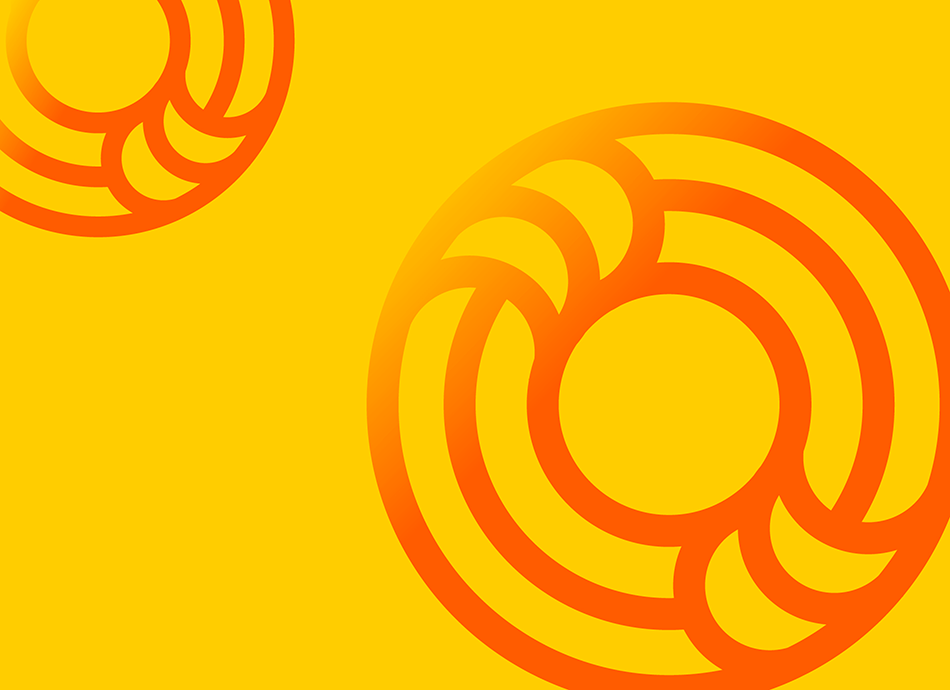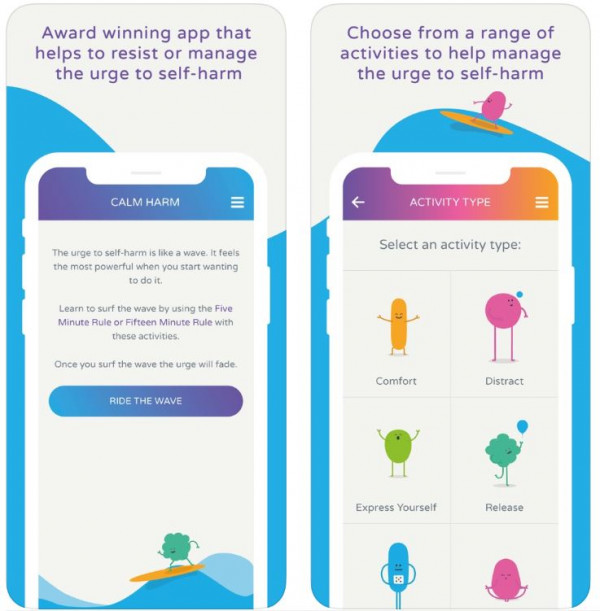Calm Harm app
Calm Harm app
- An app to reduce the urge to self-harm.

| Calm Harm app | By stem4 |
|
Features
|
|
| Country of origin | United Kingdom |
| Clinical review |
|
| Security and privacy | Does the app:
Read more about safety and security when using apps. Brochures: |
| Cost | Free |
| How to get the app |
Calm Harm app is designed for young people aged 13–19 years, but it is suitable for anyone over the age of 13 who needs help with tolerating distress – including those who self-harm.
This app comprises a number of activities that help users to resist and manage the urge to self-harm. For each activity, users can choose a 5-minute rule activity or a 15-minute rule activity. Users can hide activities that they don't find helpful. Example of activities include the following:
- Comfort has more than 30 activities that are meant to offer comfort such as stroking a pet, looking at a book that has pictures or wording you love, giving yourself a hug or gently rocking your body, etc.
- Distract has more than 50 activities that are intended to distract the user, such as how many singers can you name, say the 19 times table, collect images that make you happy, etc.
- Express yourself has suggestions of ways you can express yourself, such as saying out loud what's bothering you, keeping a diary of your thoughts and feelings, engaging in a spiritual activity, etc.
- Release provides safe alternatives to self-harm, such as squeezing a rubber ball very hard, having a temper tantrum somewhere private, singing something really loudly.
- Breathe is a breathing technique to reduce stress and anxiety symptoms.
- Random is a random scramble of the activities above.
For the complete app description, go to the App website(external link), Google Play(external link), App Store(external link) or for a more detailed review, see reviews below.
| PROS | CONS |
|---|---|
|
✔ Developed by a clinical psychologist using principles of Dialectic Behaviour Therapy (DBT), an evidence based therapy commonly used to help with self-harm. |
✘ Password protection is a double-edged sword. There are multiple reviews from users who have forgotten their passwords and are locked out (requiring re-installation). This could be more common in periods of crisis. However, password protection is optional. |
Clinical review
![]()
Reviewer: Kris Garstang, Clinical Psychologist, Life Mind Psychology
Date of review: April 2022
Version: 4.6.2
Platform: Android
Comments: Calm Harm app is designed for those aged 13–19 years, but it is suitable for anyone over the age of 13 who needs help with tolerating distress including those who self-harm.
Users can learn to ride out urges to self-harm using a variety of different skills and activities. With regular use over time, users may discover which strategies work best for them and learn to replace unhelpful coping strategies with more helpful ones. They will also gather information about their urges to self-harm including what times of the day they are most at risk and which emotions commonly lead to urges to self-harm. All of these benefits may lead to a reduction in self-harming behaviour over time, making it ideal for people who are actively trying to reduce the amount they harm themselves.
Overall, this is a brilliant and practical app that helps people use skills and strategies when they are at their most distressed. All the user has to do is remember to open the app and the app will help you choose what to do to ride out the urge to self-harm. I love that the app is based on DBT Distress Tolerance skills which I have used widely with my clients in the past. I only wish I’d known about this great app earlier. It would have really helped my clients during those times when they were alone with the overwhelming emotions that lead them to turn to self-harm to cope.
NZ relevance: Not adapted for a Māori or Pasifika audience. Helplines not available in the “Need Help” section but can be added by user.
Safety concerns: None, however, as the app is developed for a UK audience, New Zealanders do not have the same access to emergency telephone numbers that UK users do. Users will need to develop their own contacts list to call on when they need help. Once created, this list will appear in the “Need Help” section of the app.
References
- Vieira AM, Lewis SP. Mobile apps for self-injury: a content analysis.(external link) Cyberpsychol Behav Soc Netw. 2018 May;21(5):333-337.
|
Disclaimer: The NZ Health App Library is a free consumer service to help you decide whether a health app would be suitable for you. Our review process is independent. We have no relationship with the app developers or companies and no responsibility for the service they provide. This means that if you have an issue with one of the apps we have reviewed, you will need to contact the app developer or company directly. |
Factsheets – using health apps safely

How to choose a health app
Healthify He Puna Waiora, NZ

Privacy and security tips for using health apps
Healthify He Puna Waiora, NZ
Credits: Healthify editorial team. Healthify is brought to you by Health Navigator Charitable Trust.


